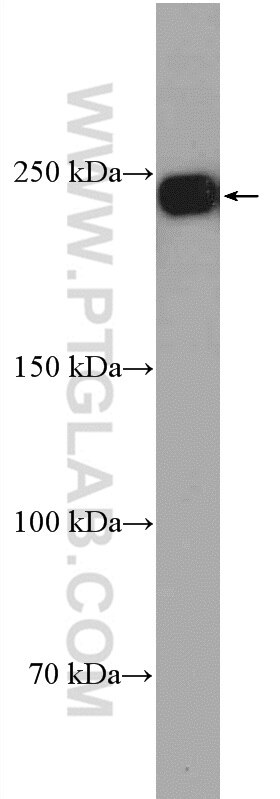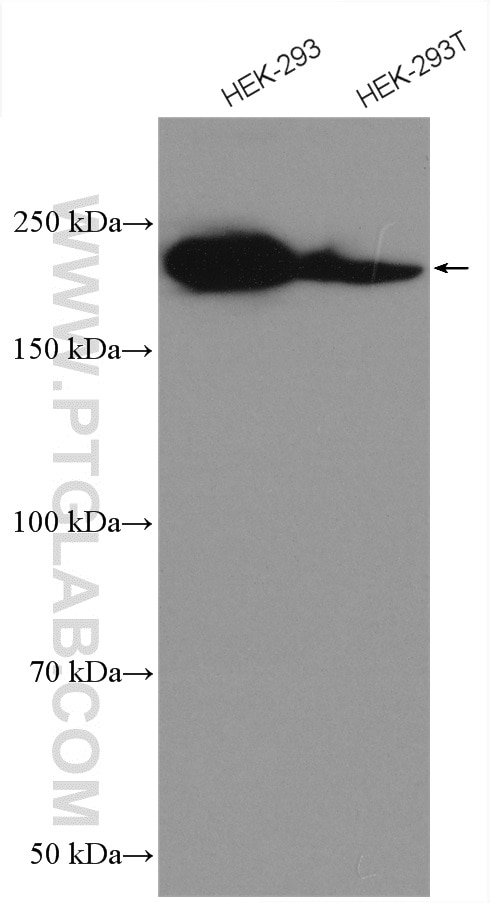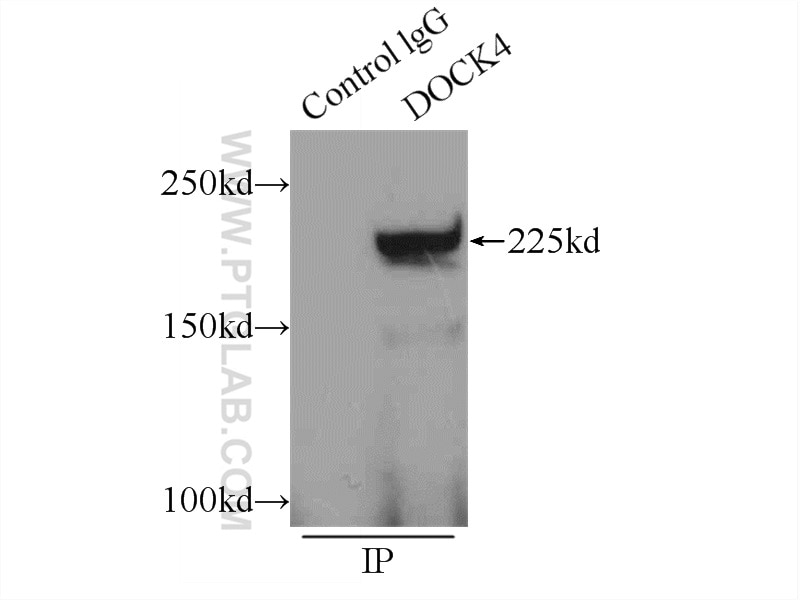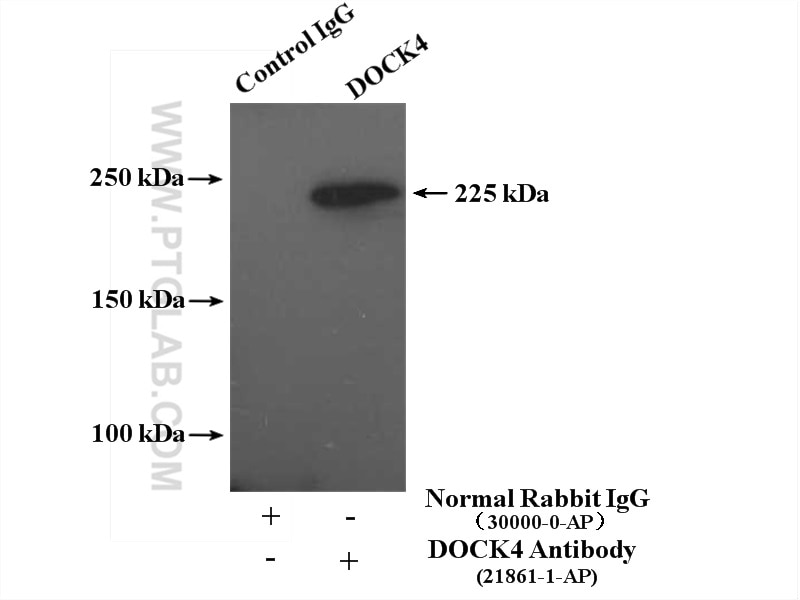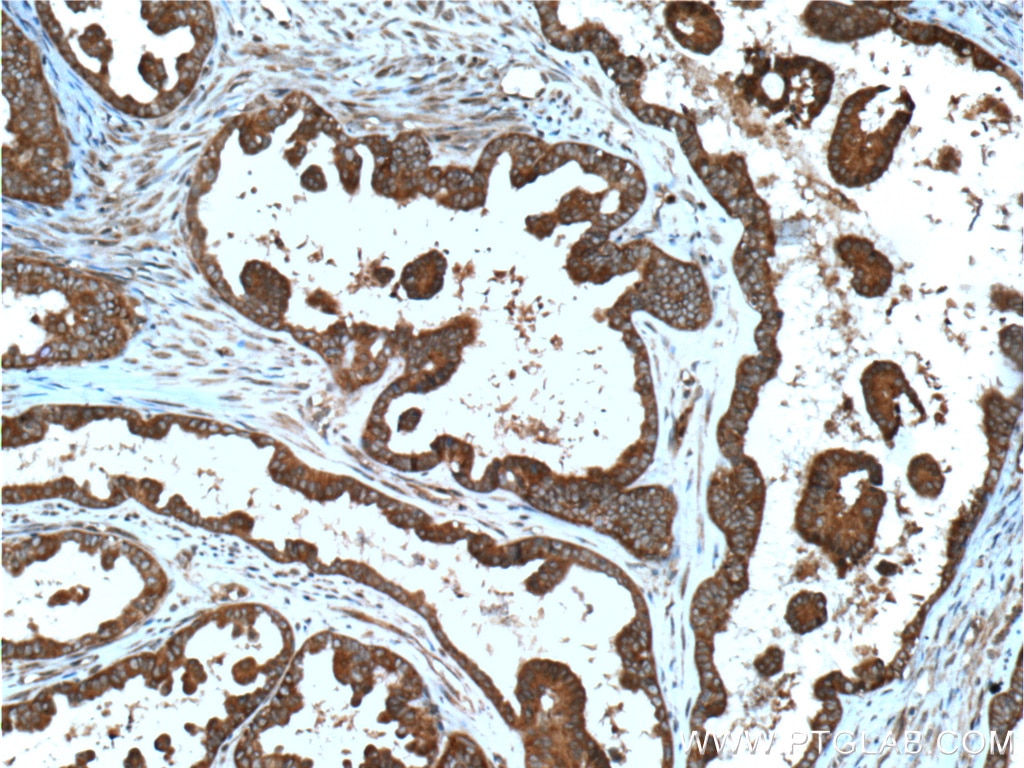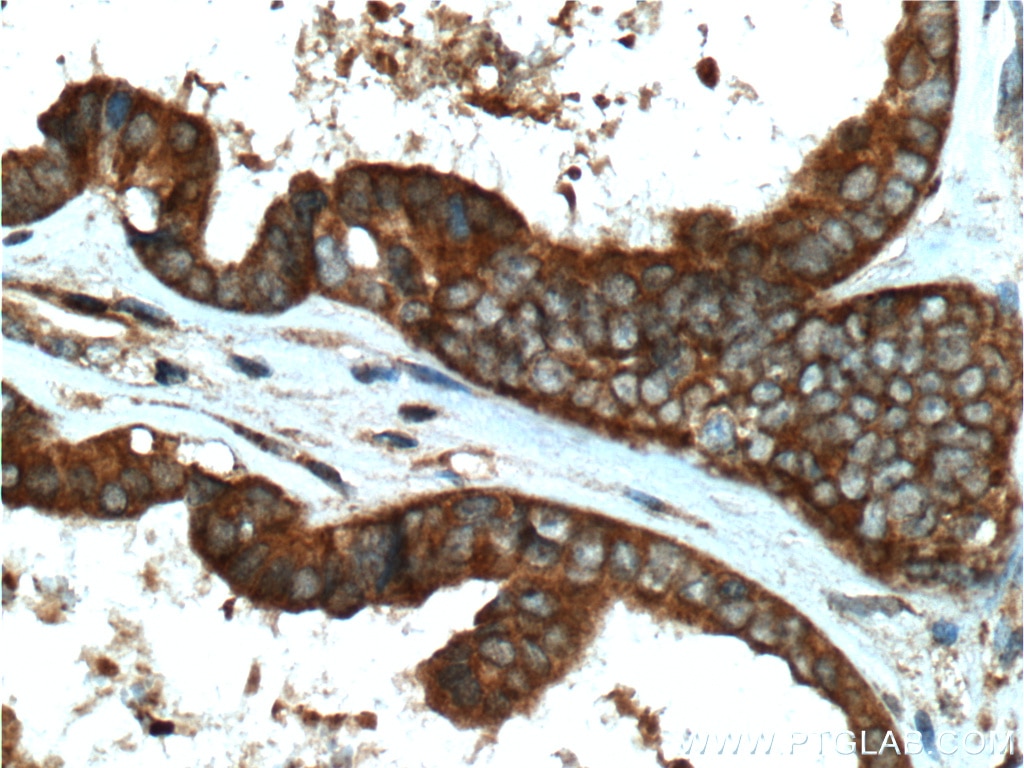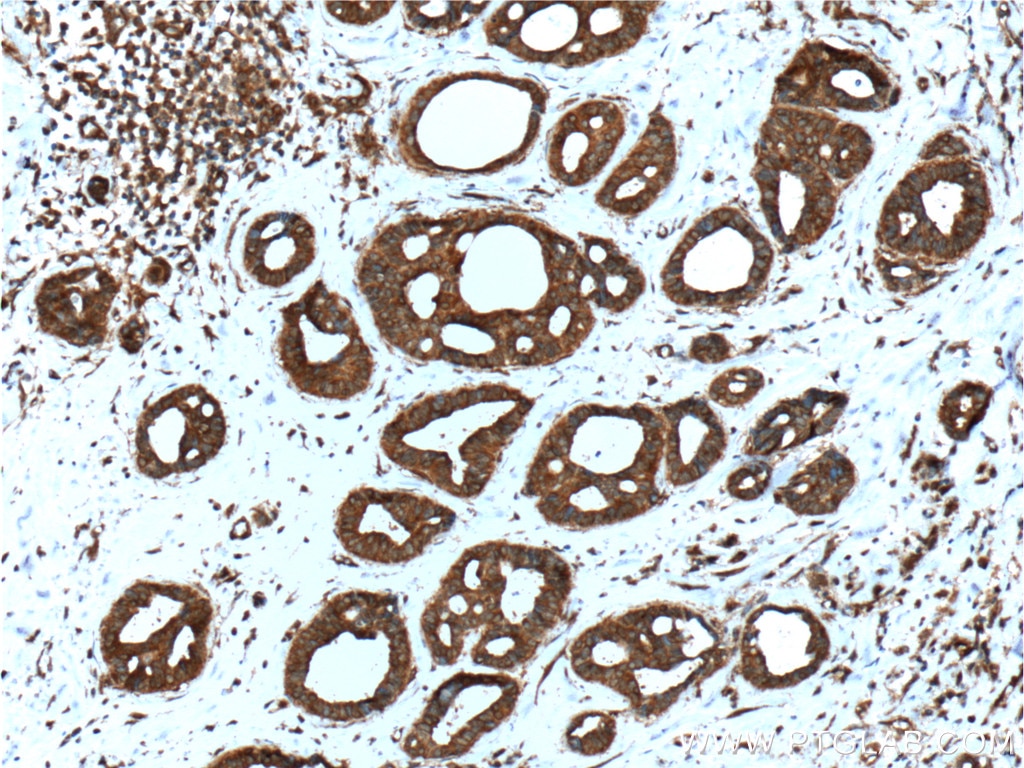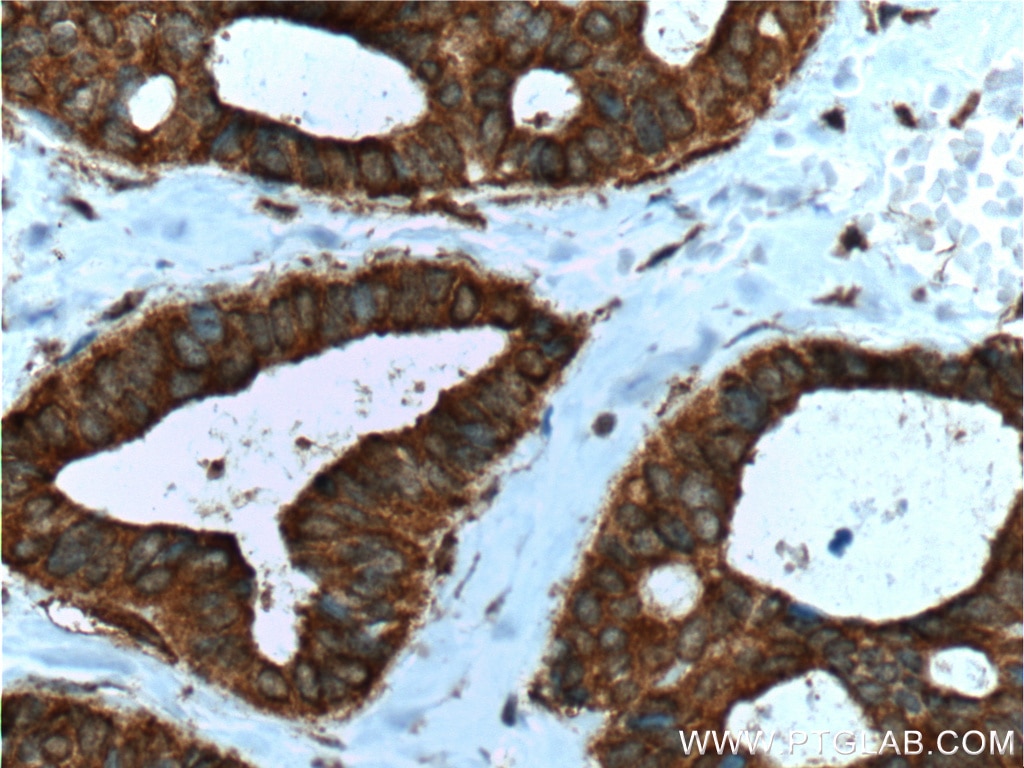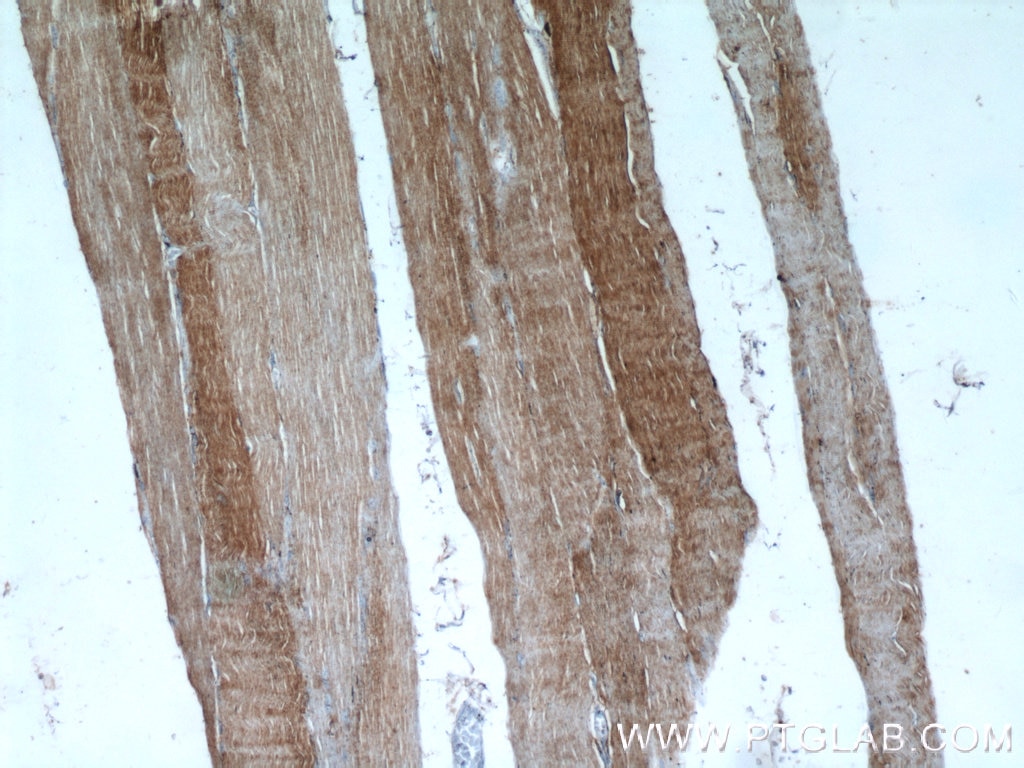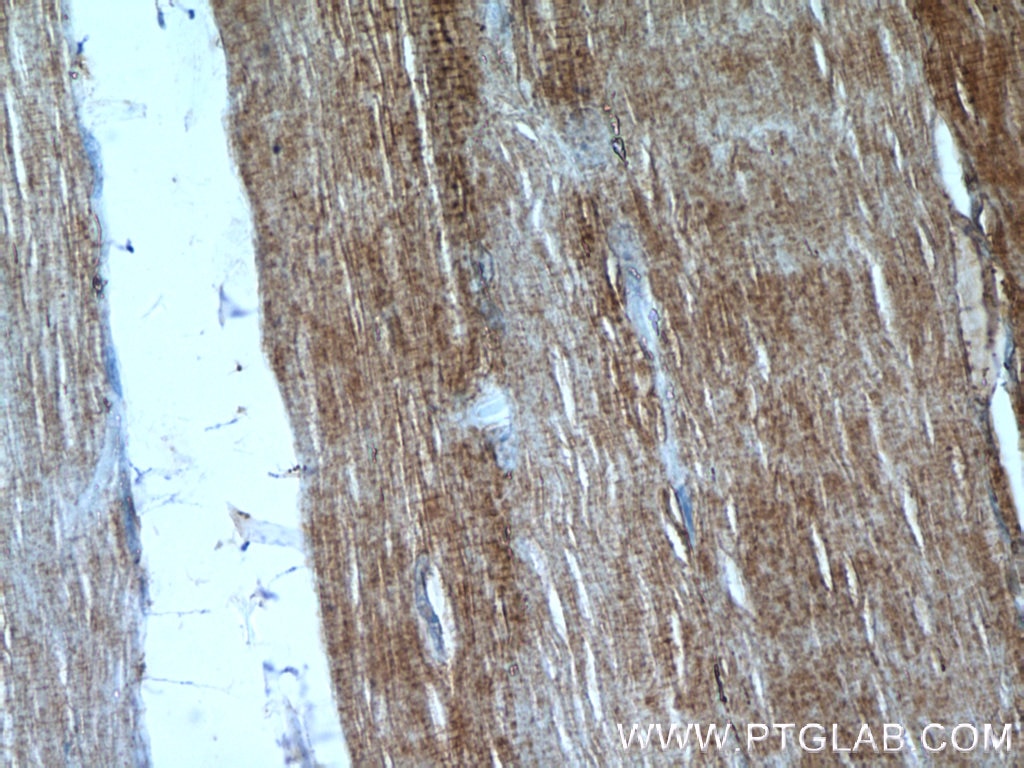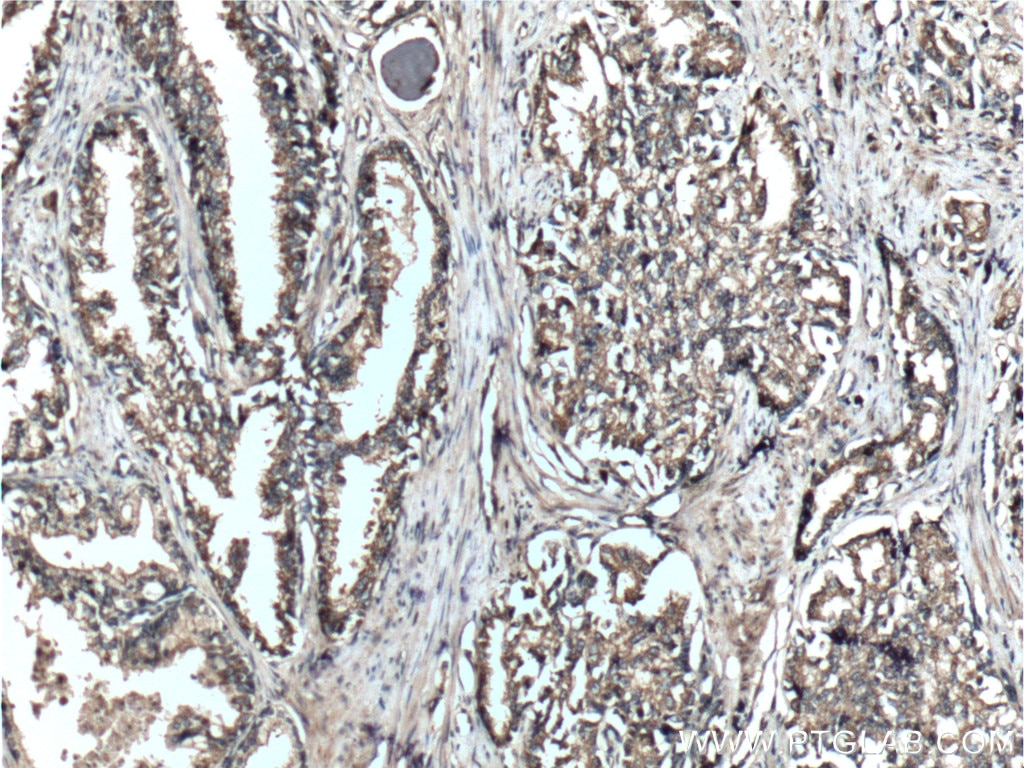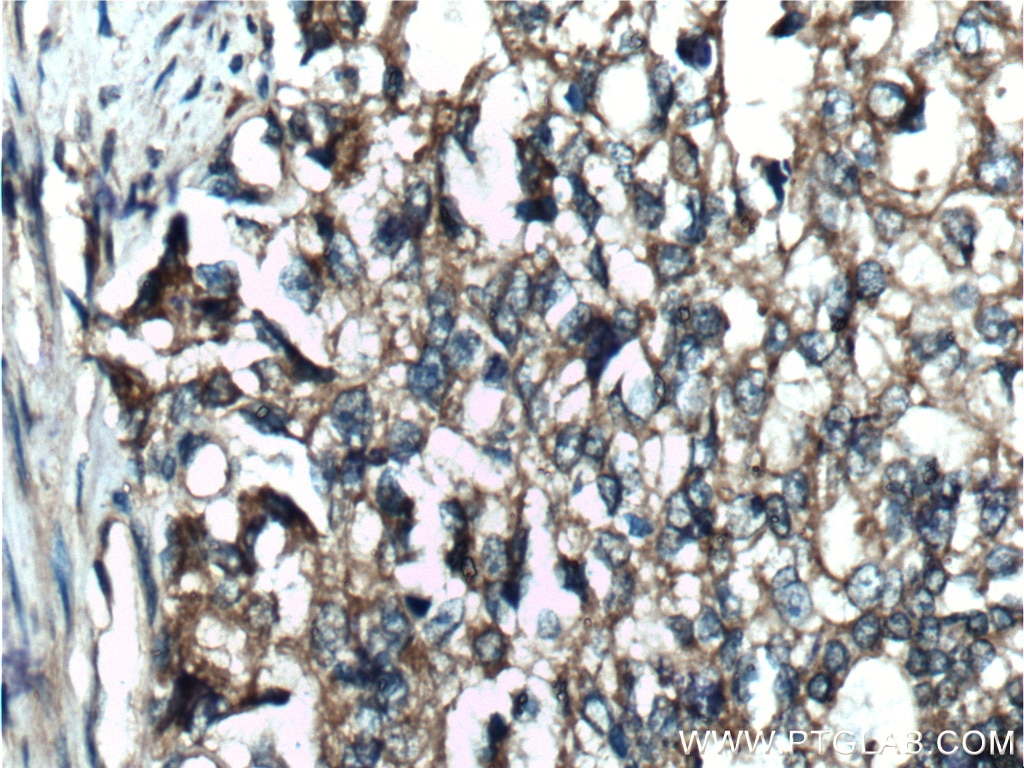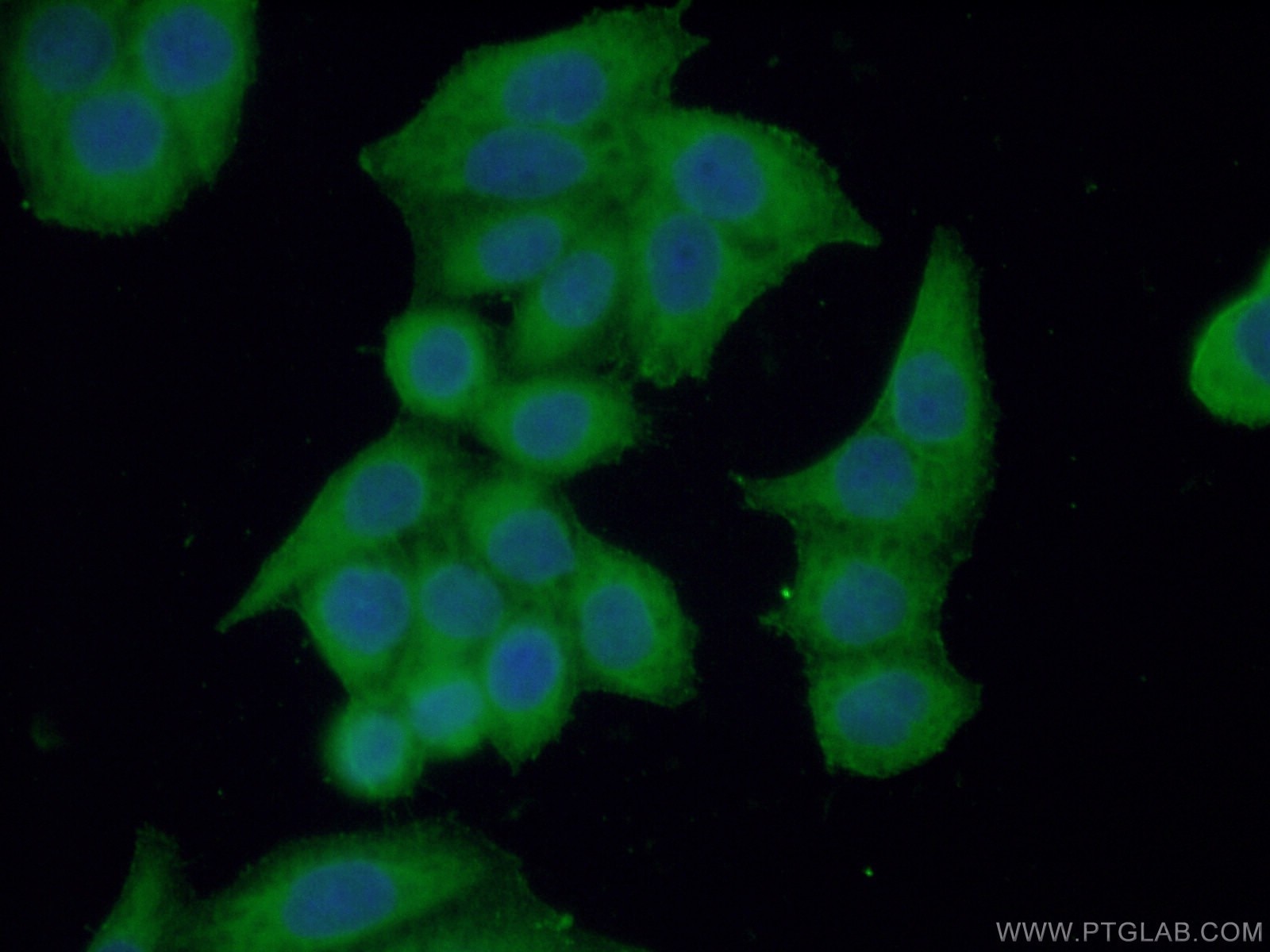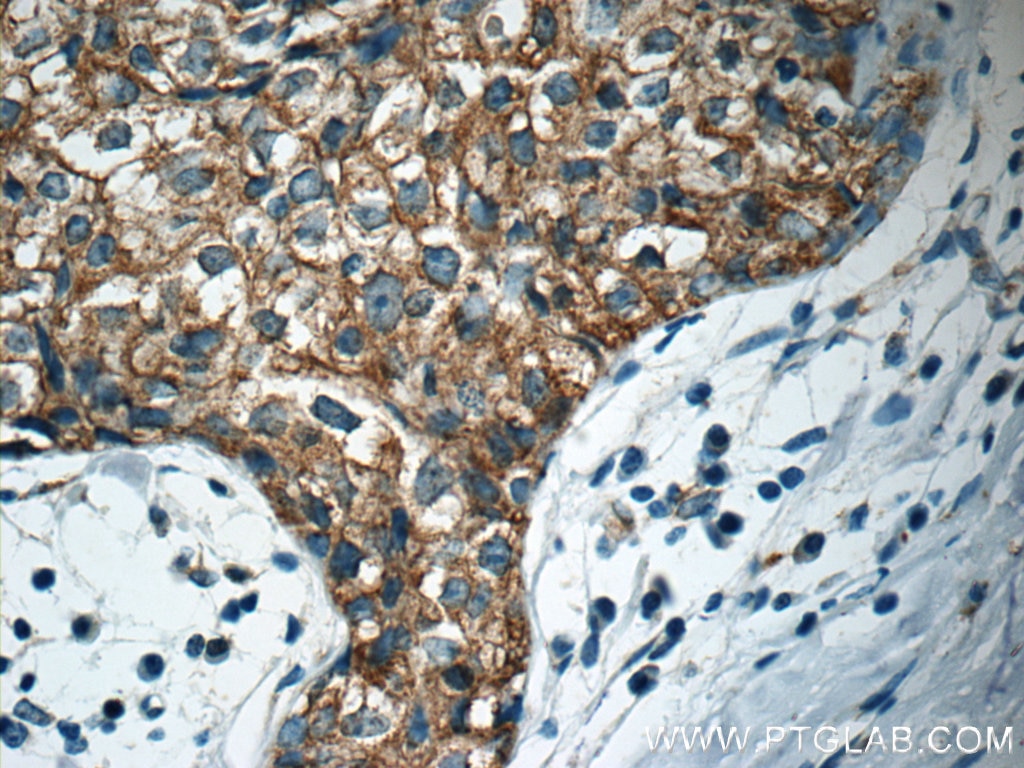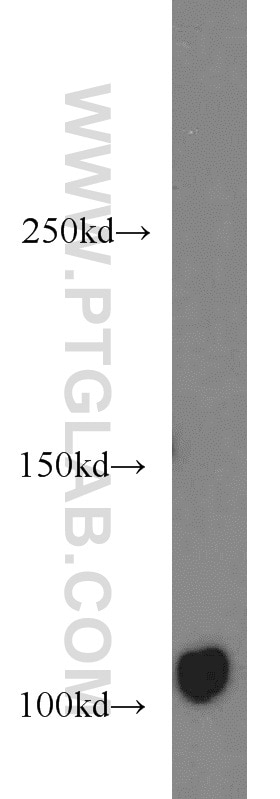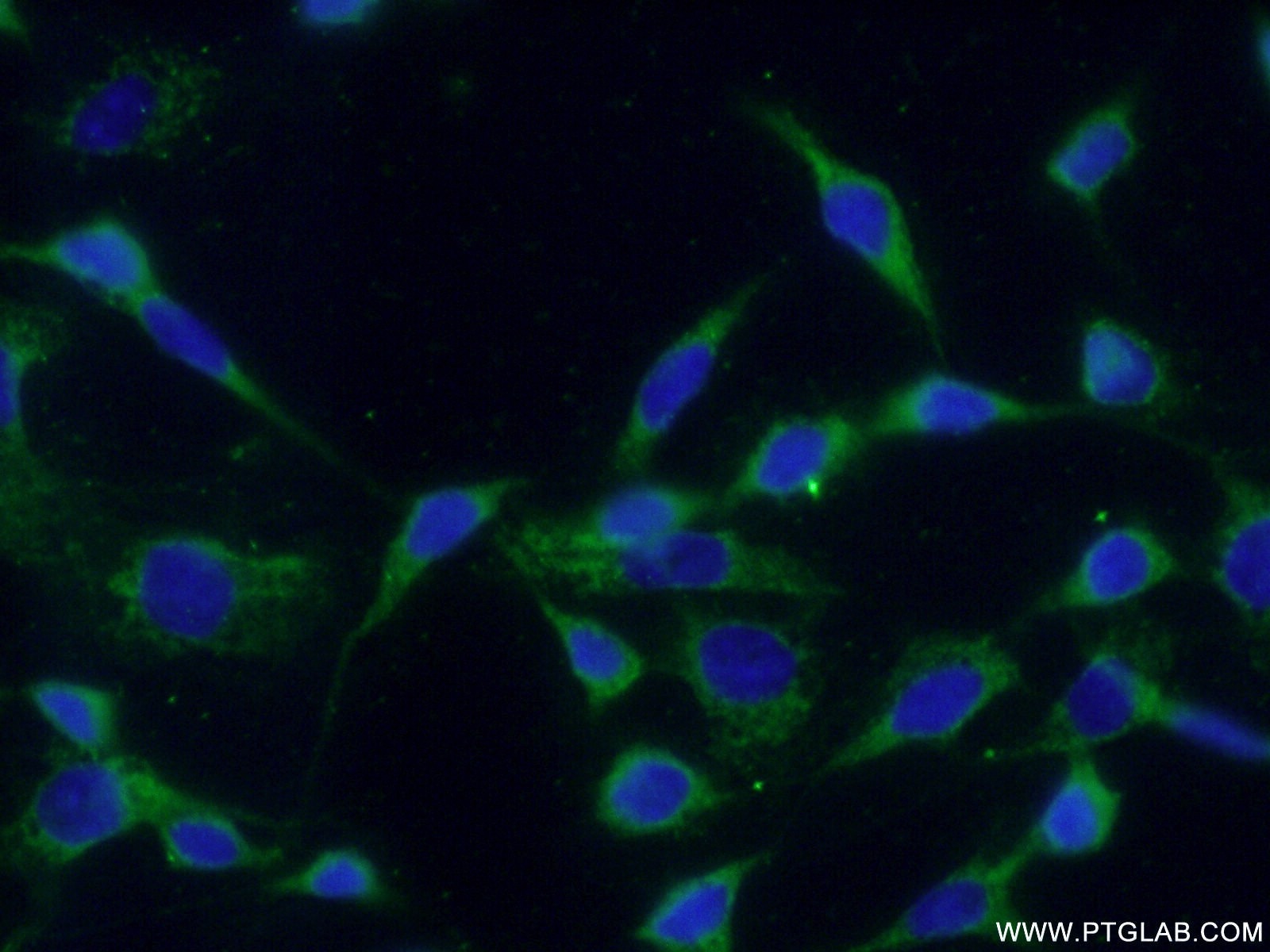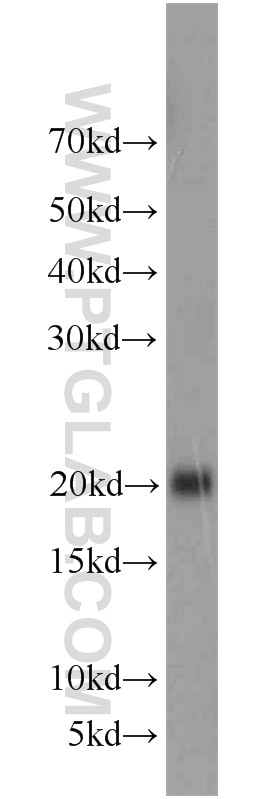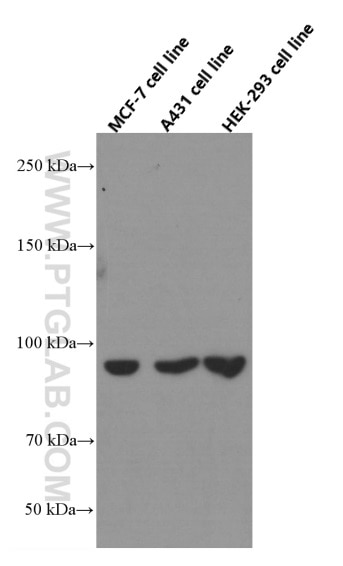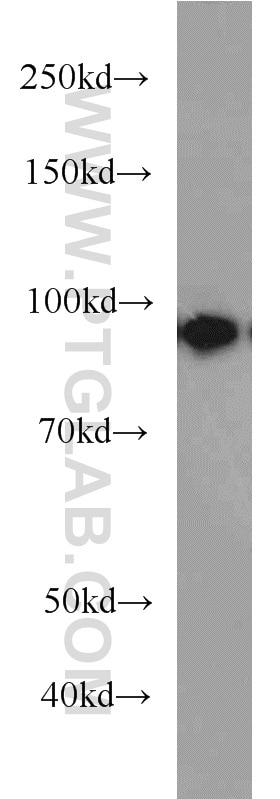DOCK4 Polyklonaler Antikörper
DOCK4 Polyklonal Antikörper für IF, IHC, IP, WB,ELISA
Wirt / Isotyp
Kaninchen / IgG
Getestete Reaktivität
human
Anwendung
WB, IP, IHC, IF
Konjugation
Unkonjugiert
Kat-Nr. : 21861-1-AP
Synonyme
Galerie der Validierungsdaten
Geprüfte Anwendungen
| Erfolgreiche Detektion in WB | HEK-293-Zellen, HEK-293T-Zellen |
| Erfolgreiche IP | HeLa-Zellen, HEK-293T-Zellen |
| Erfolgreiche Detektion in IHC | humanes Ovarialkarzinomgewebe, humanes Mammakarzinomgewebe, humanes Prostatakarzinomgewebe, humanes Skelettmuskelgewebe Hinweis: Antigendemaskierung mit TE-Puffer pH 9,0 empfohlen. (*) Wahlweise kann die Antigendemaskierung auch mit Citratpuffer pH 6,0 erfolgen. |
| Erfolgreiche Detektion in IF | HeLa-Zellen |
Empfohlene Verdünnung
| Anwendung | Verdünnung |
|---|---|
| Western Blot (WB) | WB : 1:150-1:600 |
| Immunpräzipitation (IP) | IP : 0.5-4.0 ug for 1.0-3.0 mg of total protein lysate |
| Immunhistochemie (IHC) | IHC : 1:50-1:500 |
| Immunfluoreszenz (IF) | IF : 1:50-1:500 |
| It is recommended that this reagent should be titrated in each testing system to obtain optimal results. | |
| Sample-dependent, check data in validation data gallery | |
Veröffentlichte Anwendungen
| WB | See 3 publications below |
| IHC | See 1 publications below |
| IF | See 1 publications below |
Produktinformation
21861-1-AP bindet in WB, IP, IHC, IF DOCK4 und zeigt Reaktivität mit human
| Getestete Reaktivität | human |
| In Publikationen genannte Reaktivität | human |
| Wirt / Isotyp | Kaninchen / IgG |
| Klonalität | Polyklonal |
| Typ | Antikörper |
| Immunogen | DOCK4 fusion protein Ag16516 |
| Vollständiger Name | dedicator of cytokinesis 4 |
| Berechnetes Molekulargewicht | 2011 aa, 230 kDa |
| Beobachtetes Molekulargewicht | 225 kDa |
| GenBank-Zugangsnummer | BC117689 |
| Gene symbol | DOCK4 |
| Gene ID (NCBI) | 9732 |
| Konjugation | Unkonjugiert |
| Form | Liquid |
| Reinigungsmethode | Antigen-Affinitätsreinigung |
| Lagerungspuffer | PBS mit 0.02% Natriumazid und 50% Glycerin pH 7.3. |
| Lagerungsbedingungen | Bei -20°C lagern. Nach dem Versand ein Jahr lang stabil Aliquotieren ist bei -20oC Lagerung nicht notwendig. 20ul Größen enthalten 0,1% BSA. |
Hintergrundinformationen
DOCK4, originally identified as a product of a gene which is deleted during tumor progression, is a member of DOCK180 family proteins. Dock4 has been found recently to be associated with several neuropsychiatric diseases, including autism, dyslexia, and schizophrenia. Multiple studies in fibroblasts then confirmed that Dock4 is capable of controlling cell migration by transducing several upstream signals, such as Wnt, platelet-derived growth factor, and RhoG, toward activation of Rac1. Mutations in this gene have been associated with ovarian, prostate, glioma, and colorectal cancers.
Protokolle
| Produktspezifische Protokolle | |
|---|---|
| WB protocol for DOCK4 antibody 21861-1-AP | Protokoll herunterladen |
| IHC protocol for DOCK4 antibody 21861-1-AP | Protokoll herunterladen |
| IF protocol for DOCK4 antibody 21861-1-AP | Protokoll herunterladen |
| IP protocol for DOCK4 antibody 21861-1-AP | Protokoll herunterladen |
| Standard-Protokolle | |
|---|---|
| Klicken Sie hier, um unsere Standardprotokolle anzuzeigen |
Publikationen
| Species | Application | Title |
|---|---|---|
Proc Natl Acad Sci U S A Up-regulated cytotrophoblast DOCK4 contributes to over-invasion in placenta accreta spectrum. | ||
Front Cell Dev Biol USP36-Mediated Deubiquitination of DOCK4 Contributes to the Diabetic Renal Tubular Epithelial Cell Injury via Wnt/β-Catenin Signaling Pathway. | ||
